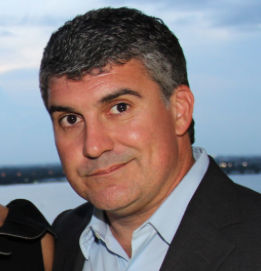Every week, we ask a Miami real estate professional for their thoughts on the top three stories from the week before. This week, we spoke with Frank Guerra, principal of Altis Cardinal and owner of NEO.
Miami Agent (MA): As a developer, where do you see building trends going in 2015?
Frank Guerra (FG): In the last five to six years, we’ve worked our way through the lingering distressed inventory, so we’re definitely moving towards increased development across a multitude of property types, including multi-family, condominiums, which is obvious, and even office space.
We’re entering a development and construction phase, and the real question is going to focus around absorption. While we have plenty of condos going up, there remains a question of will be the end-user; who will be the people living in these units?
Typically, the buyers are investors who don’t intend to live in these properties. In the past, Miami has struggled with filling these condos, with several remaining empty along the coast leading up to the boom and following the crash. Some of the pre-construction sales, especially near Brickell, have been lackluster, which suggests a lot of local end-users are going to be unwilling to pay certain prices. It’ll be interesting to see if units fill up as more of these condo projects open up.
MA: A lot of Miami’s ocean front land is being developed at an alarming rate, which many believe is leading these areas to a land shortage. Has this affected your business at all, and if so, how have you worked around it?
FG: There is no question that there’s less waterfront land – it’s almost impossible to find raw, undeveloped land along the waterfront. Where the market has gone, as a result, is repurposing obsolete projects, meaning 50 to 60 year old properties that have become outdated. We’re seeing it in several places throughout the Miami metro area. If an investor or developer purchases 90 percent or more of the units, they’re generally allowed to condominiumize and redevelop. That’s a phenomenon we’re seeing all throughout South Florida.
There’s no question of whether it’s become more difficult to get into a waterfront property – it has. But ultimately, there is a still a route to adding more waterfront properties, and it’s repurposing.
MA: What is the most difficult part of an acquisition like the one Altis Cardinal just went through acquiring 901 Ponce de Leon Boulevard, an office building in Coral Gables?
FG: For us, the most difficult part is putting together a financing package that makes sense. What do I mean by that? When you take assets that need to be repositioned because they either have below market rent or they’re carrying forward concessions from 2010 and below when concessions were giving on long-term, you have a challenge in putting a lender in place. The reason being, lenders usually have certain set service/coverage ratio requirements. Now, in our case, we have room to move rents and burn off concessions, but the question becomes how to bridge the time period between acquisition and being able to realize that change to market rent.
We’ve found a lender, Hn Capital, who was willing to work around our predicament and tailor a package specifically to meet our needs.

